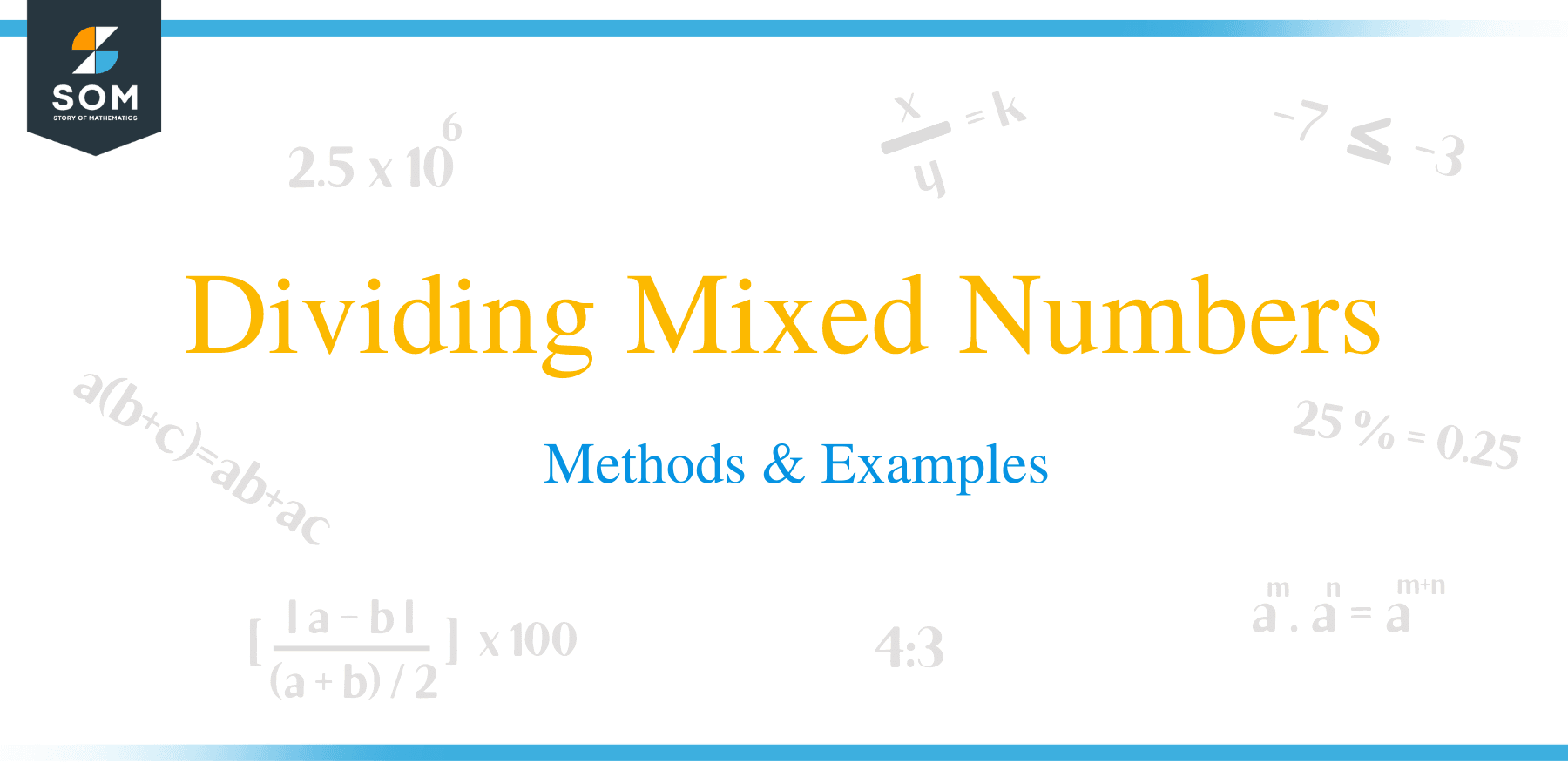- Home
- >
- Dividing Mixed Numbers – Methods & Examples
Dividing Mixed Numbers – Methods & Examples
 How to Divide Mixed Numbers?
How to Divide Mixed Numbers?
Mixed numbers consist of an integer followed by a fraction. It is initially an improper fraction, which then broken down into a mixed number form. Division of mixed numbers is very similar to the multiplication of the mixed numbers.
Here are the steps followed when dividing mixed numbers:
- Begin by converting each mixed fraction to an improper.
- Invert or flip upside down the improper fraction that is the divisor
- Multiply the first fraction by the second fraction. Multiplication of numerators and denominators are done separately.
- Convert the resultant fraction into a mixed number if it is improper.
- Simplify the mixed number to its lowest terms possible.
Example 1
Solve the following
1 3/4 ÷ 2 2/5
Solution
- Convert each mixed number into improper fraction.
1 3/4 = 7/4 and 2 2/5 = 12/5
- Now proceed with the division as:
1 3/4 ÷ 2 2/5 = 7/4 ÷ 12/5
- Determine the reciprocal of the second fraction as 5/12
7/4 ÷ 12/5 = 7/4 x 5/12
- Multiply the numerators together and denominators also together.
7/4 x 5/12= (5 x 7)/(12 x 4)
= 35/48
Example 2
Workout:
2 ¾ ÷ 1 2/3
Solution
2 ¾ ÷ 1 2/3
= 11/4 ÷ 5/3
= 11/4 × 3/5
= (11 × 3)/(4 × 5)
= 33/20
= 1 13/20
Example 3
Simplify the following,
2 4/17 ÷ 1 4/17
Solution
2 4/17 ÷ 1 4/17
= 38/17 ÷ 21/17
= 38/17 × 17/21
= (38 × 17)/(17 × 21)
= 646/357
= 38/21
= 1 17/21
Example 4
Work out: 3 1/3 ÷ 1 5/6
Solution
Step 1:
Convert each mixed number to an improper fraction.
3 1/3 = 10/3 and 1 5/6 = 11/6
Now, 3 1/3 ÷ 1 5/6 = 10/3 ÷ 11/6
Step 2:
Invert the second fraction and change the operator to multiplication.
10/3 ÷ 11/6 = 10/3 x 6/11
Step 3:
Multiply the numerators at the top and denominators at the bottom.
10/3 x 6/11 = (10 x 6)/(11 x 3)
= 60/33
Step 4:
Simplify the answer.
Both the numerator and denominator have a common factor 3, and therefore simplify the fraction to its lowest terms.
60/33 = 20/11
Now convert the answer back to a mixed number.
20/11= 1 9/11
Therefore, 3 1/3 ÷ 1 5/6 = 1 9/11
Example 5
Work out: 4 ÷ 2 1/3
Solution
Step 1:
Convert the mixed numbers into improper fractions.
2 1/3 = 7/3
4 ÷ 2 1/3 = 4/1÷ 7/3
Step 2:
Find the reciprocal of the second fraction and change the operator to multiplication.
4/1÷ 7/3 = 4/1 x 3/7
Step 3:
Multiply the fractions
4 × 3/7 = 12/7
Step 4:
Simplify and convert.
Now convert the fraction back to a mixed number.
12/7 = 1 5/7
Example 6
Two number have a product of 18. If one number is 8 2/5, Calculate the value of the other number.
Solution
The product of the numbers = 18
One of the numbers = 8 2/5 = {(8 × 5) + 2}/5 = 42/5
To find the value of the other number, divide 18 by the fraction.
= 18 ÷ 42/5 = 18 × 5/42
= 90/42
= 15/7
Therefore, the other number is:
= 2 1/7
Example 7
A 25 m long pole is cut into logs of each 1 2/3 meters. Calculate the total number of logs cut from the pole.
Solution
Total number of logs cut can be calculated by dividing 25 m by 1 2/3 = 25 ÷ 1 2/3
= 25 ÷ 5/3
= 25 × 3/5
= 75/5
Therefore, the number of logs cut = 15
